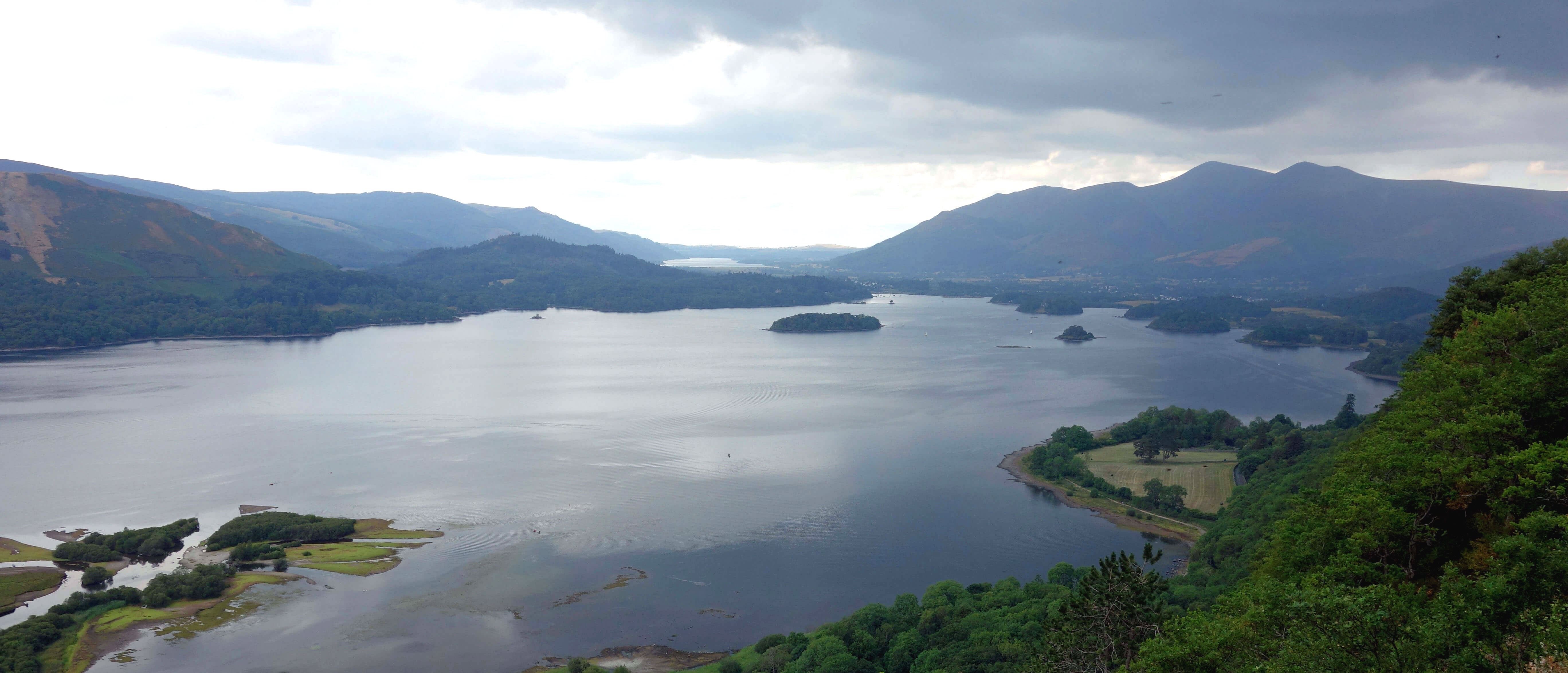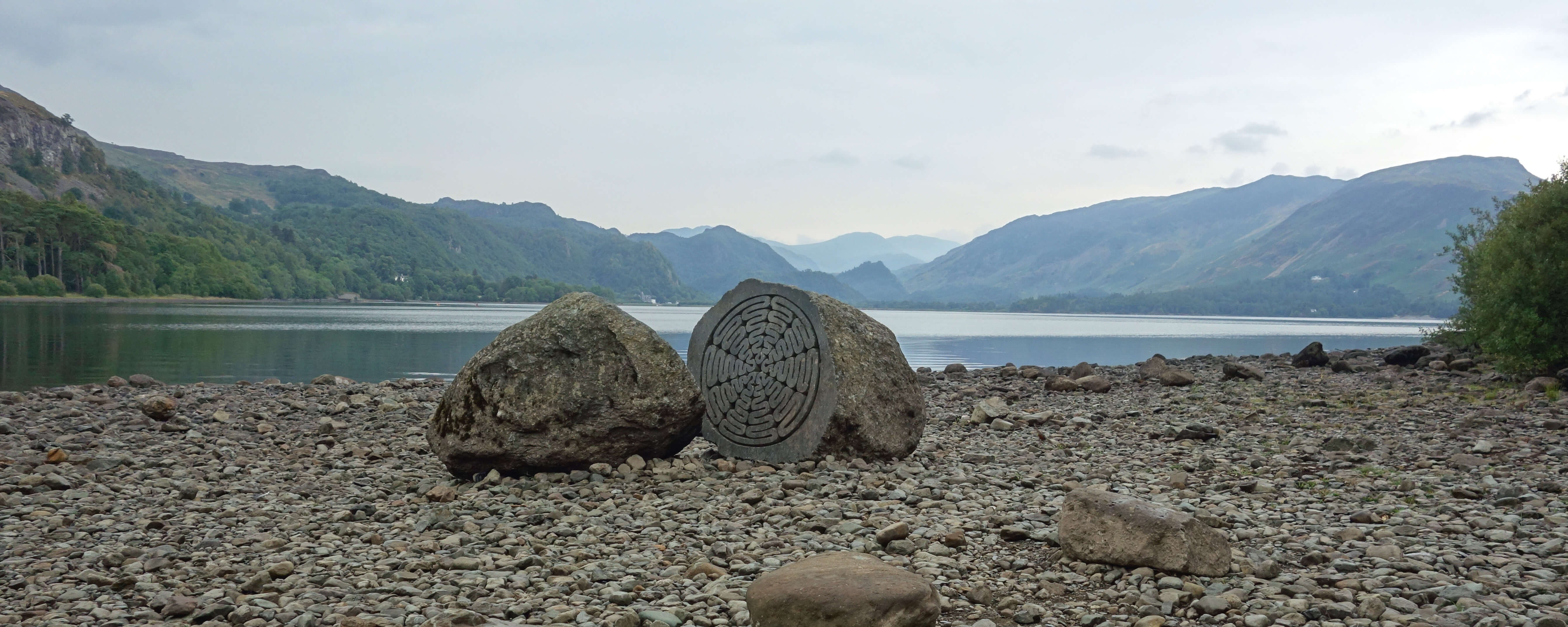

Home Preamble Index Areas Map References Me Drakkar

Derwent Water, Keswick and Skiddaw from Walla Crag
We first walked from Castlerigg Farm, past Rakefoot, to Walla Crag (379 metres). This airy perch provides a fine view of Derwent Water but not one that qualifies it as an OSVP. I don’t know what more the OS expects. There’s a view of Derwent Water directly below, with the islands arrayed and various water-craft idling about. We can look in any direction and see classic Lakeland peaks: to the north, Skiddaw and Blencathra; to the east, the Dodds and Helvellyn Lower Man; to the south, Scafell Pike and Great Gable; to the west, Robinson and Grisedale Pike. The various knobbly prominences of Borrowdale are also well seen, receding into the distance.
The Surprise View
We returned to Ashness Bridge and walked below Falcon Crag, through the National Trust's Great Wood, the largest area of native broadleaf woodland in the Lake District, and dropped down to Calfclose Bay. On the picturesque pebble beach there's a sculpture, called the Centenary Stone, marking one hundred years of the National Trust. On the cleft surfaces of the split rock there's a design of ten rings in ten segments.
Calfclose Bay and Centenary Stone
Before proceeding to our second OSVP, we visited some of the 18th century equivalents of OSVPs. In 1778 Thomas West had in his guide to the Lake District described a set of ‘viewing stations’ (West, 1778). These stations were intended to tell tourists and artists the best places from which to view the picturesque beauty of the Lake District. As it happens, the list of viewing stations also indicates that Keswick provides the best base for visiting viewpoints. We could incorporate three of West's twenty-six stations into our walk alongside Derwent Water.
Derwent Water from Crow Park
We continued to our second OSVP, in Castlehead Wood. Unlike Surprise View, this is not an OSVP for motorists, that is, one where drivers may park, snap the view, and be on their way. Here there’s a short scramble to its top at 162 metres, sufficient to ensure that we had this top to ourselves, apart from a colony of flying ants. It is indeed an excellent view south, although sadly not north to Skiddaw, and we felt grateful to the OS for telling us it would be, because it is not obvious from below that a view is afforded from the top.
The view from Castlehead Wood
Continued in the next Sauntering.
Home Preamble Index Areas Map References Me Drakkar
© John Self, Drakkar Press, 2018-

Top photo: The western Howgills from Dillicar; Bottom photo: Blencathra from Great Mell Fell